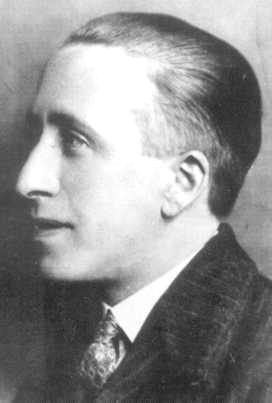19.2 Lewis Grassic Gibbon and A Scots Quair
Activity 7 
In this section you are going to consider the following aspects of the novel trilogy. While studying this section, take notes on the following questions:
- What is the most significant way in which the Scots language is used in Lewis Grassic Gibbon’s trilogy of novels, A Scots Quair?
- How does the language work in relation to the narrative?
- How does it work in relation to the voices of the characters and the voices of the people in the community?
- How does that community change from one novel to the next?

A Scots Quair is a trilogy consisting of three novels: Sunset Song (1932) – voted Scotland’s favourite novel in a Scottish Booktrust survey in 2005, Cloud Howe (1933), and Grey Granite (1934). The novels revolve around the life of Chris Guthrie, a woman from the north-east of Scotland, during the early 20th century. In the opening note to A Scots Quair, Grassic Gibbon says that he has included Scots words, phrases, and idioms of speech, into the narrative, which is mainly written in English.
So the predominant language is English, but the infiltration of these words and their placement in the rhythm, texture and narrative of the novels changes their idiom entirely into Scots. The particular effect this has on the narrative is to intertwine the words of the main characters, both their speech and their internal unspoken thoughts, with that of the observing eye; it also intertwines the language of the local people, both at their most idealistic and their most spiteful and gossipy.
Close reading shows how this works, even within a single sentence. In the opening paragraph of Part Two of Sunset Song, we visualise Chris Guthrie running up the hill, lying down, and breathing deep, but the words take us into her consciousness so that we think with her as well as observe her. Note that when Gibbon says she would turn back for nothing, “not even that whistle of father’s”, he does not write, ‘of her father’s’ (which would have maintained an external account, but the leaving out of the possessive pronoun suddenly creates a shift in narrative perspective and we see things from Chris’ point of view).
Gibbon’s novels take us from farm to small town to city, and the community and the language is different in each one. The language conveys aspects of decency, civility and hope, intimacy and affection, brutality and violence, but also becomes less easeful, more stressed, as the trilogy proceeds. It can be argued that this use of Scots voices contributes to the overall narrative structure. In the passage I’ve just referred to, at the beginning of Part Two, when Chris comes to the standing stones and lies down to gather her thoughts, she remembers the last time she was there, which we’ve just read about at the end of Part One.
The second section then recounts the events that have taken her from the end of Part One to the beginning of Part Two, which we will return to at the end of the unit. The effect of this narrative approach is a sense in the reader that the narrative cannot be predicted. What happens in consequence of our actions involves a multitude of choices and possibilities. Nothing is inevitable, and therefore the struggle is worthwhile because a better outcome might be made. By embedding the idiom of different Scots voices so deeply in the narrative, it might be argued that Gibbon is showing how there is always more than one perspective, more than one way of telling, and understanding, any story. This is a key element in modernist art and Scots prose fiction is a clear demonstration of how it works.
19.1 Examples of prose fiction written in Scots
